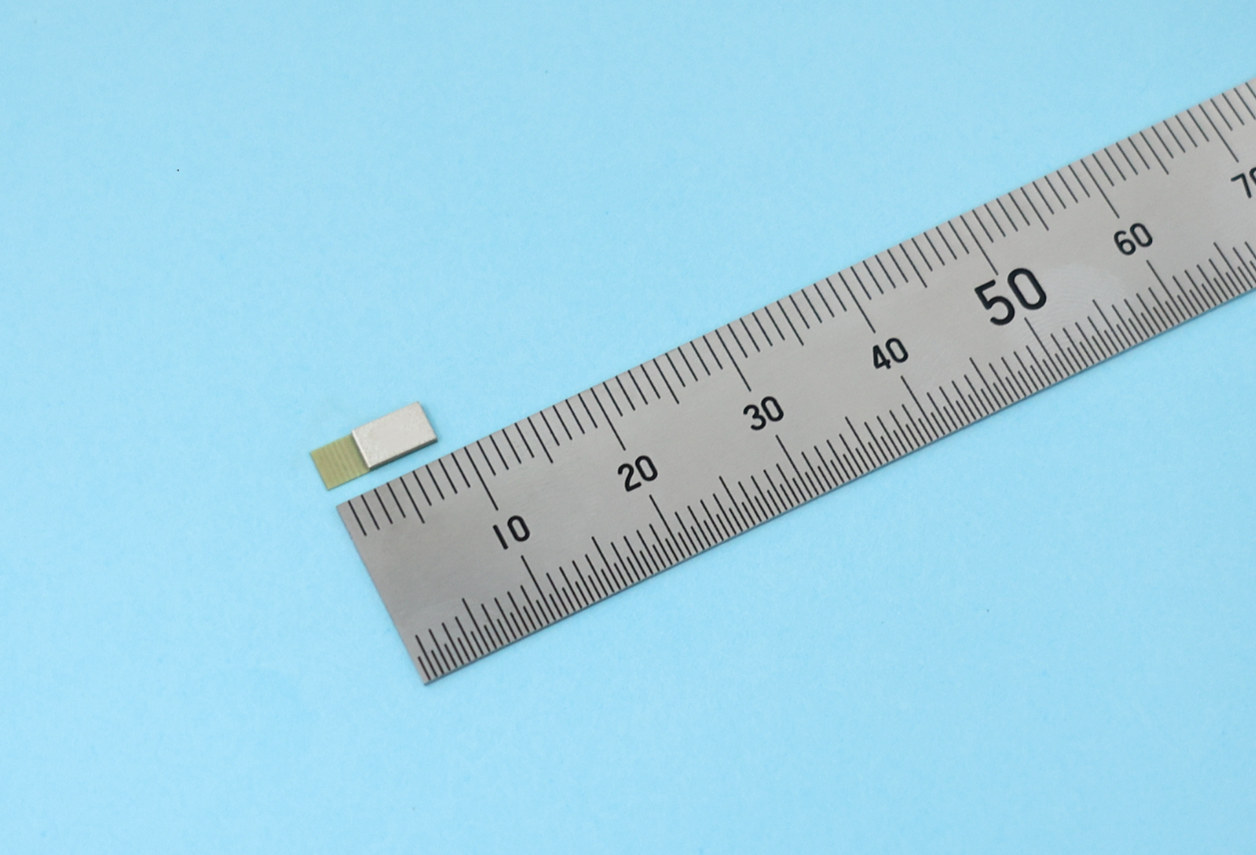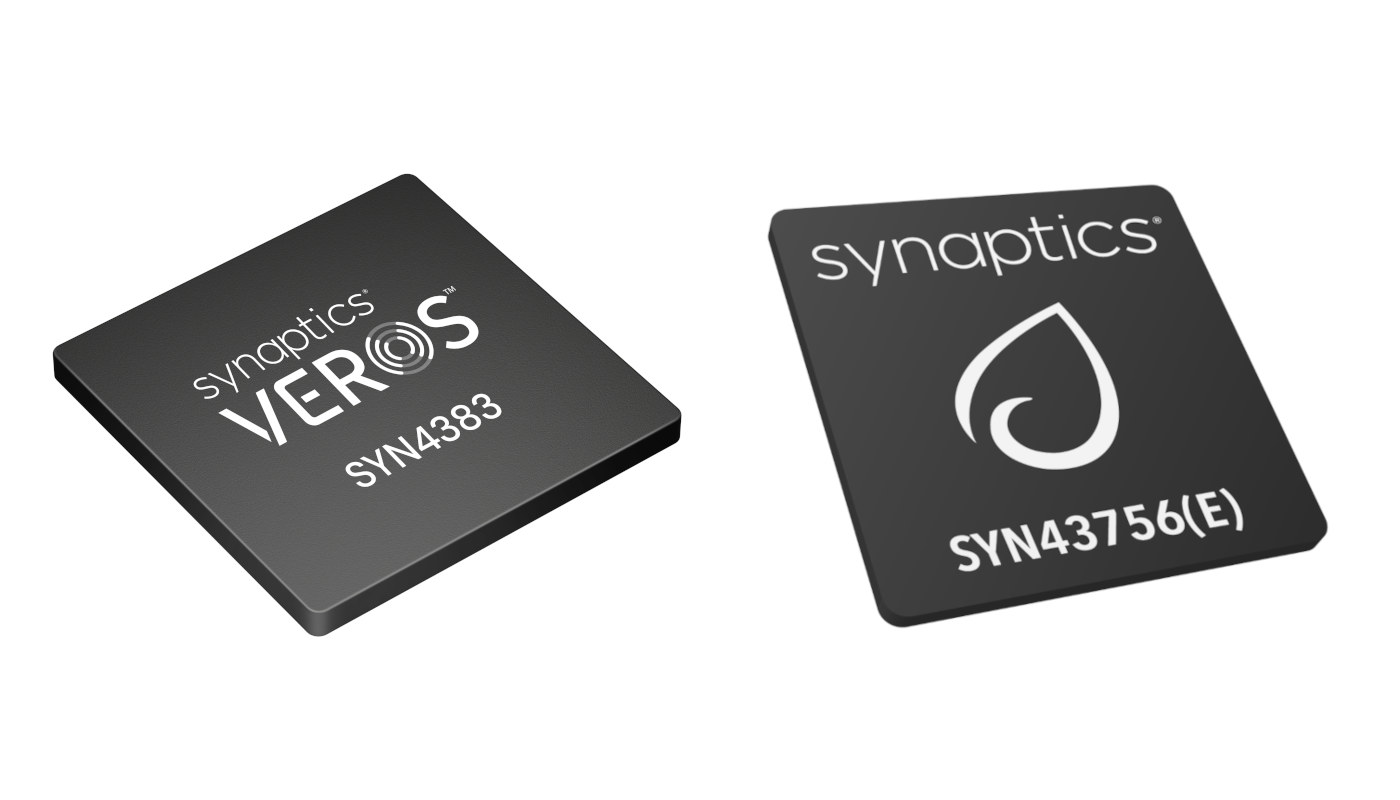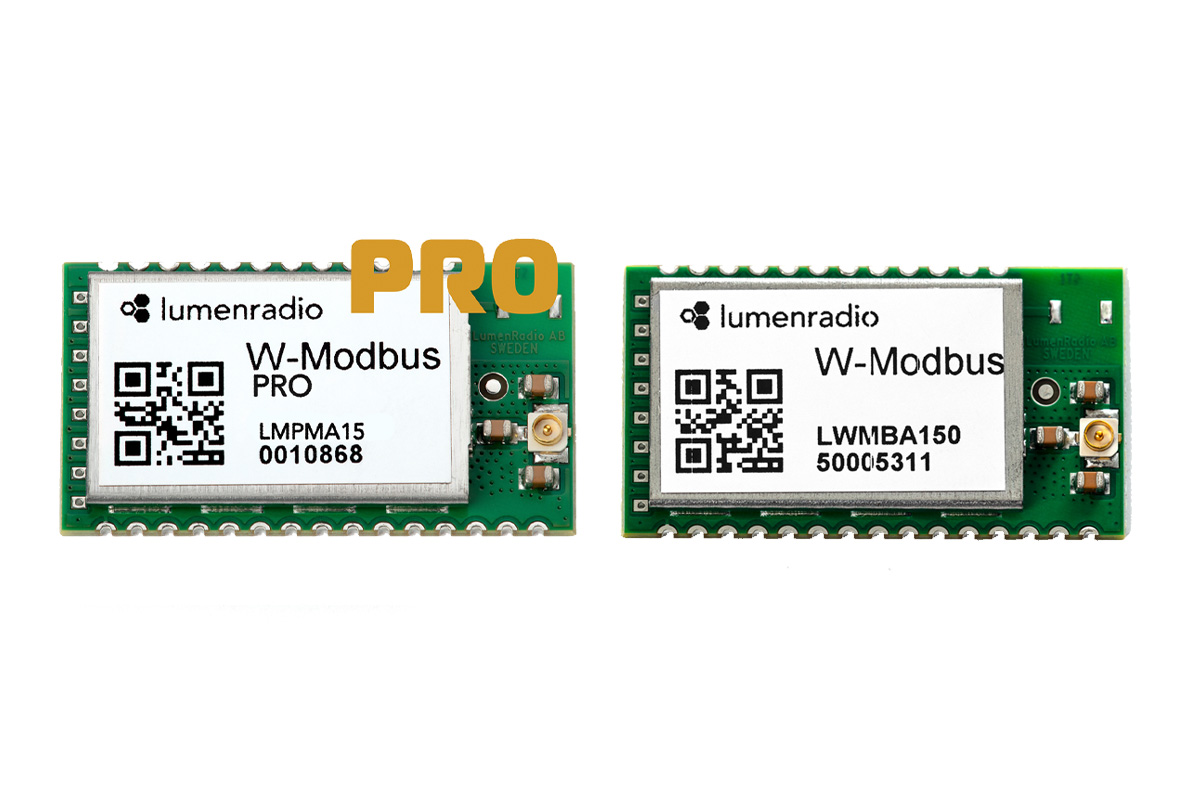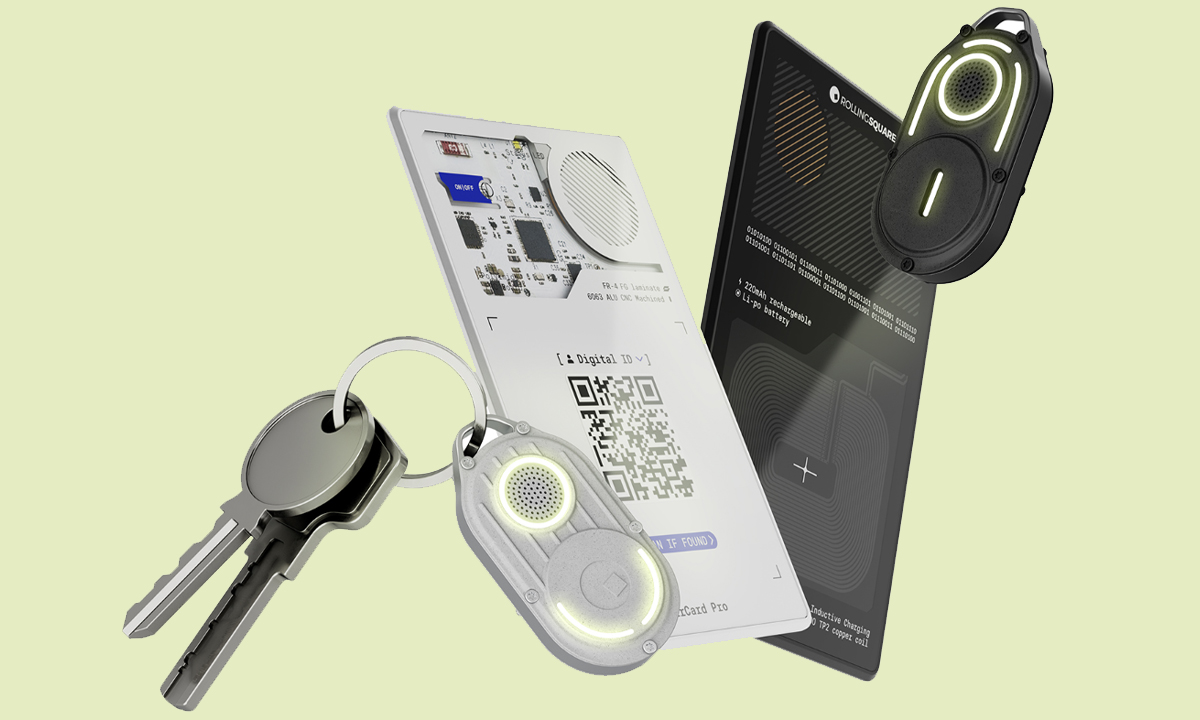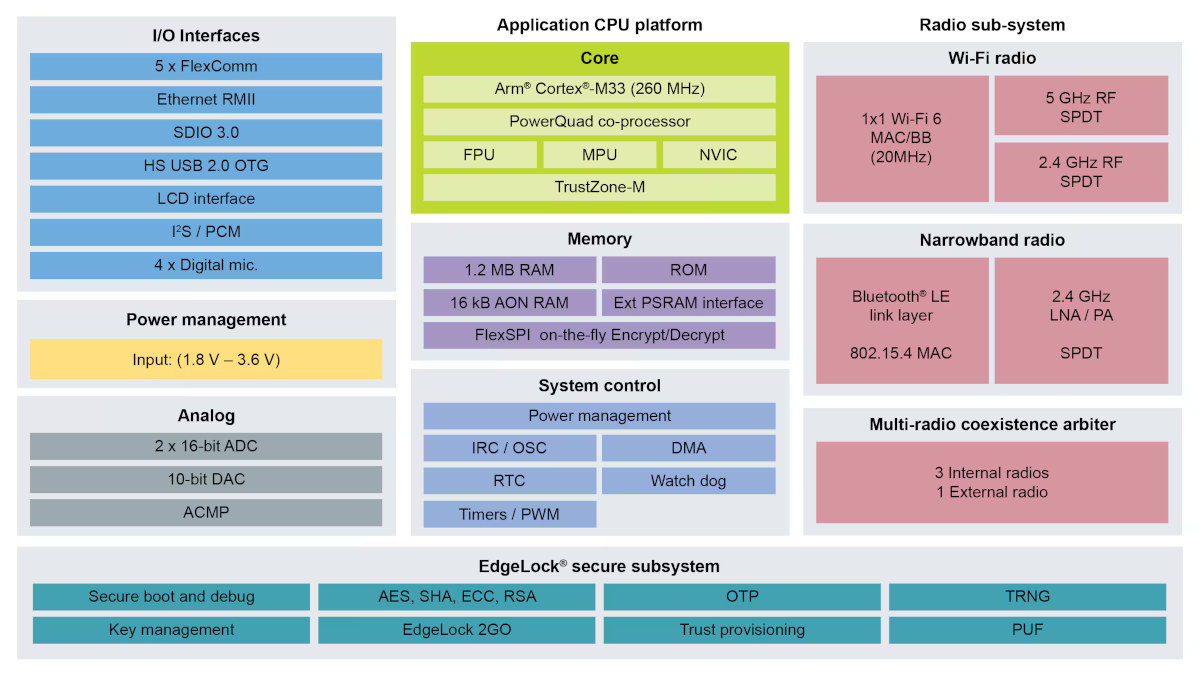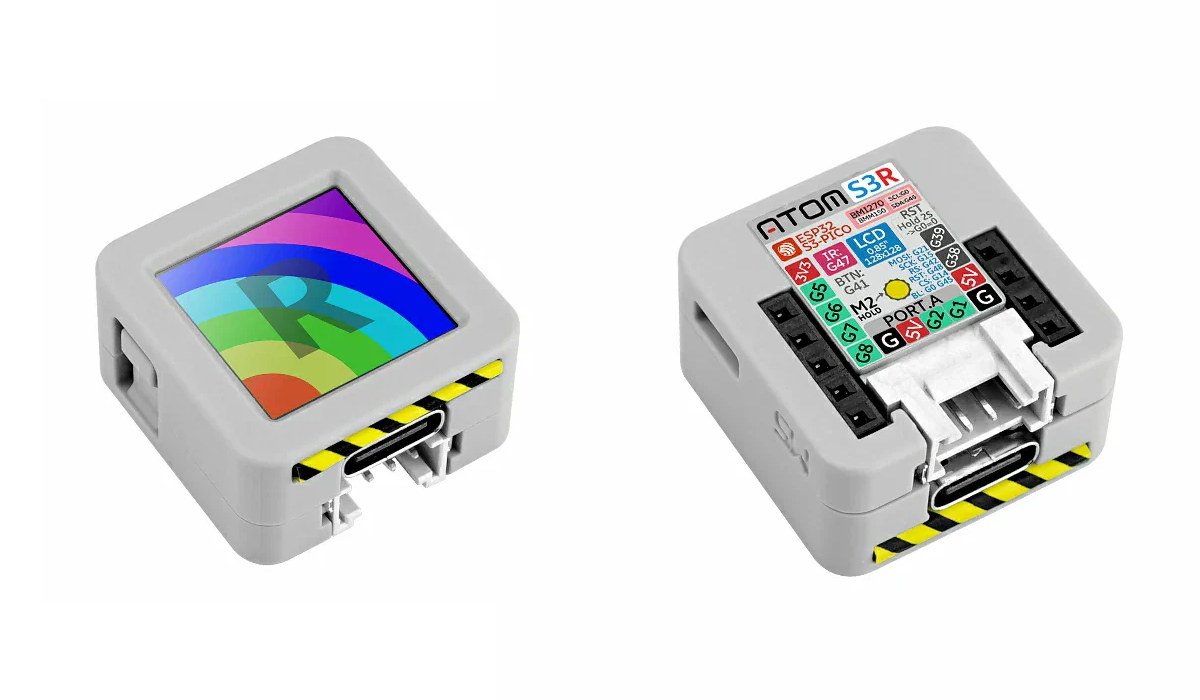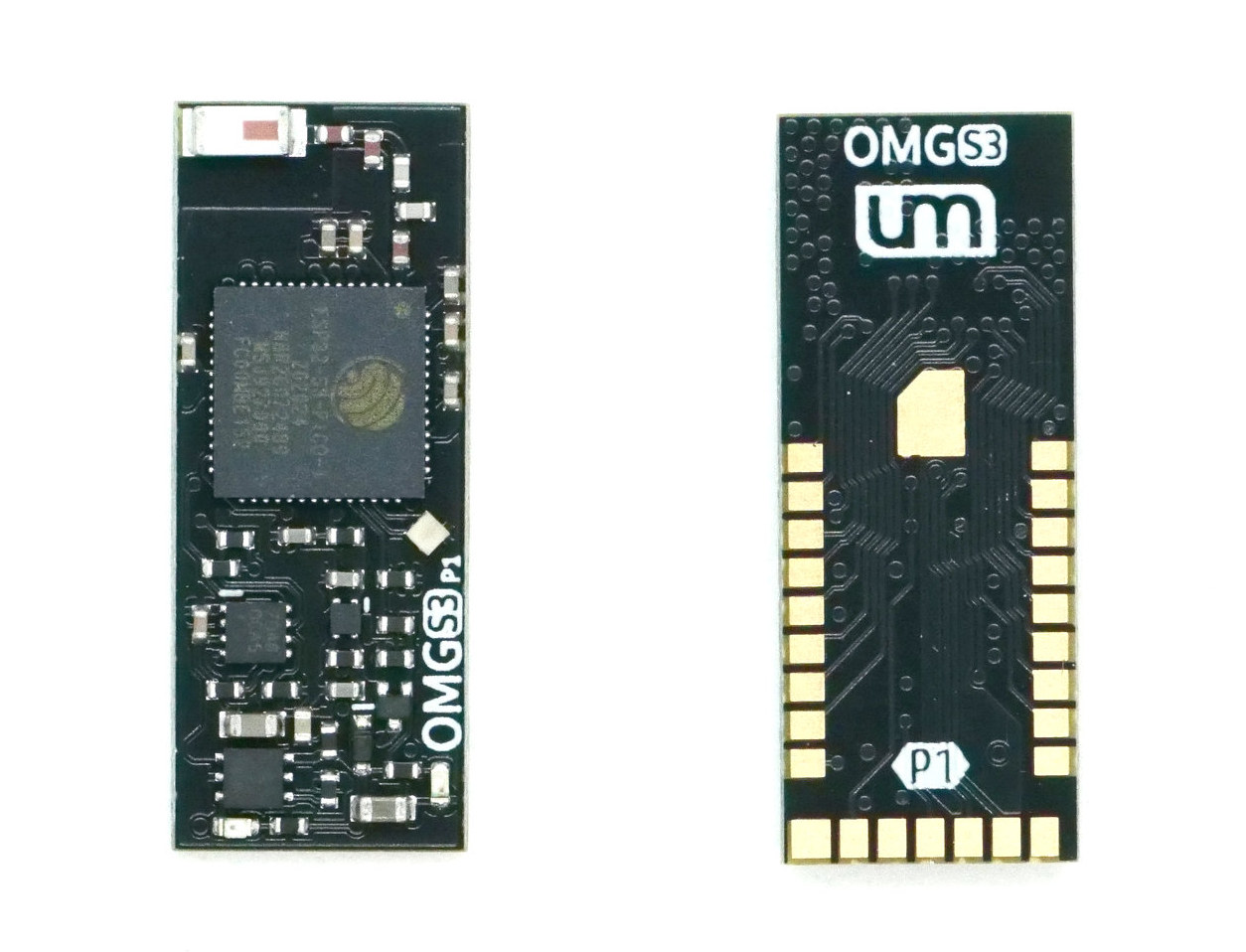Japanese company KAGA FEI has recently unveiled the incredibly small ES5L15BA1 Bluetooth LE 6.0 and 802.15.4 module based on Nordic Semi nRF54L15 ultra-low-power Cortex-M33 wireless MCU. We had previously covered the u-Blox NORA-B2 which I already found pretty small at 14.3 x 10.4 x 1.9mm, but the ES5L15BA1 module goes a step further measuring just 8.55 x 3.25 x 1.00 mm with an integrated antenna which could make it the world’s smallest Bluetooth LE module. KAGA FEI ES4L15BA1 specifications: SoC – Nordic Semiconductor nRF54L15 MCU cores Arm Cortex-M33 with Arm TrustZone @ 128MHz RISC-V coprocessor for software-defined peripheral Memory – 256KB SRAM Storage – 1.5MB non-volatile memory Wireless Bluetooth 6.0 Data rates – 2Mbps, 1Mbps, 500kbps, 125kbps Features AoA / AoD Channel Sounding 802.15.4 radio for Thread / Zigbee / Matter Nordic Proprietary 2.4 GHz protocol up to 4 Mbps Frequency – 2402 to 2480 MHz +8dBm output power Antenna […]
Synaptics Veros SYN4383 and SYN43756(E) SoCs support tri-band WiFi 6E, Bluetooth 5.3/5.4, and 802.15.4 connectivity
Synaptic has unveiled the SYN4383 and SYN43756(E) high-performance “Veros” SoCs with tri-band Wi-Fi 6E, Bluetooth 5.3/5.4, and an optional 802.15.4 radio. The SYN4383 is an upgrade to SYN4382 SoC that supports 1,200 Mbps 2×2 MIMO Wi-Fi 6E, Bluetooth 5.4, and 802.15.4 for Zigbee and Thread support. It supports real simultaneous dual-band (RSDB) operation and offers “greater system integration”. The SYN43756(E) is similar but lacks an 802.15.4 radio and RSDB support. SYN4383 “Triple Combo 3” Wi-Fi 6E, Bluetooth 5.4, 802.15.4 SoC Synaptics Veros SYN4383 key features: Tri-band 2×2 MIMO Wi-Fi 6E (802.11ax) up to 1200 Mbps throughput, RSDB with 2.4 GHz radio and either 5 or 6 GHz radio, and support for legacy 802.11a/b/g/n/ac WiFi Bluetooth 5.4 (Bluetooth 6.0 compatible) with LE Audio, Channel Sounding for accurate positioning 802.15.4 radio for Thread and Zigbee Application-layer support for Matter-compliant security and interoperability Smart Co-Ex for WiFi/Bluetooth coexistence in the 2.4 GHz band […]
LumenRadio’s nRF52840 based Wireless Modbus module aims to simplify Modbus RTU installations
LumenRadio has recently introduced a Wireless Modbus (W-Modbus) module built around Nordic Semiconductor’s nRF52840 SoC. The module can connect up to 100 nodes, integrates a power amplifier with 100mW transmission power, and supports Bluetooth LE for smartphone connectivity. These features simplify Modbus RTU installations by eliminating traditional control cables, making them ideal for building and industrial automation applications. The company mentions two variants available for this module the ‘W-Modbus OEM Module’ which supports one Modbus client, and the ‘W-Modbus PRO OEM Module’ supporting up to sixteen Modbus clients. Both modules support self-healing, self-organizing mesh protocols that address the issues of network reliability and scalability in industrial environments. The module can also be used for remote monitoring and troubleshooting via smartphones. LumenRadio’s Wireless Modbus module specification Module – LumenRadio W-Modbus module SoC – Nordic Semiconductor nRF52840 CPU – 32-bit Cortex-M4 core with FPU @ 64 MHz Connectivity Bluetooth 5.4 (BLE, Bluetooth mesh, […]
AirCard Pro and AirNotch Pro Bluetooth trackers support Google/Apple network integration (Crowdfunding)
Rolling Square introduces its latest Bluetooth trackers – AirNotch Pro and AirCard Pro – designed for use with personal items like keys, wallets, bags, and more. Both trackers are designed for portability, and the AirNotch Pro is designed as a keyring, while the AirCard Pro suits wallets with a thinner, credit card-like design. The products integrate into Apple and Google’s tracking networks, with some features currently limited to Apple. Previously, we covered the SenseCAP T1000, a credit card-sized LoRaWAN GPS tracker powered by Semtech’s LR1110. Several years ago we covered some Bluetooth beacons such as the Puck.js or RuuviTag, but we have yet to explore Bluetooth-only trackers with wireless charging capabilities. Rolling Square AirCard Pro Bluetooth trackers AirCard Pro technical features: Network White version – Operates on Google’s Android Find My Device network (Android 6 or above) Black version – Operates on Apple Find My network (iOS 14 or above) […]
NXP RW612 Arm Cortex-M33 Wireless MCU offers Wi-Fi 6, Bluetooth 5.4, and 802.15.4 radios
The NXP RW612 is an Arm Cortex-M33 SoC with three radios, namely WiFi 6, Bluetooth 5.4, and 802.15.4 for Thread and Matter connectivity. It also has a small sibling called the RW610 without the 802.15.4 radio. I first came across RW61x chips, when Debashis wrote about the Trimension SR250 UWB chip mentioning it can work with “host processors like NXP’s i.MX, RW61x, and MCX families”. I initially thought it was a typo for the iW612 tri-radio solution introduced in 2022, and the RW612 is indeed similar, but it’s a complete wireless microcontroller/SoC with an Arm Cortex-M33 application core so it can be used independently as a host instead of a companion chip. NXP RW612 and RW610 specifications: MCU sub-system Core – 260 MHz Arm Cortex-M33 with TrustZone-M Memory On-chip 1.2 MB SRAM PSRAM interface for memory expansion Storage – Quad FlexSPI Flash XIP with on-the-fly decryption Peripheral interfaces Up to […]
ESP32-C6 WiFi 6 and Bluetooth 5.0 USB-C development board integrates 1.47-inch TFT LCD Display
Waveshare has introduced the ESP32-C6-LCD-1.47 development board powered by an ESP32-C6 RISC-V microcontroller with WiFi 6 and Bluetooth 5 connectivity and equipped with a 1.47-inch display with a 172×320 resolution. With a 4MB flash, an RGB LED, and a microSD card slot for extra storage, this board is suitable for projects that need a compact display, low power consumption, and wireless connectivity such as AIoT applications and human-machine interfaces (HMI). Earlier this month, we covered the ESP32-S3 USB dongle, another development board from Waveshare designed for HMI applications with the same 1.47-inch display with a 172×320 resolution, but a USB Type-A port instead of the USB-C port found in the model covered today. In the past, we’ve written about other ESP32-based development boards for HMI applications, including the LILYGO T-HMI, ESP32-S3-Touch-LCD-4.3B, and Waveshare’s ESP32-S3 LCD Driver Board supporting both square and round displays. Feel free to check them out if […]
M5Stack ESP32-S3-Pico-based devkits: ATOMS3R with 0.85-inch color display, and ATOMS3R Cam with VGA camera
M5Stack ATOMS3R and ATOMS3R Cam are two tiny devkits based on ESP32-S3-Pico system-in-package and a similar design but the first one features a 0.85-inch color color IPS display, while the other is equipped with a GC0308 VGA camera. Both modules measure just 24x24mm with a thickness of around 13mm, integrate BMM150 and BMI270 motion sensors, offer GPIO expansion through female headers and a grove connector, and feature an infrared transmitter and a USB Type-C port for power and programming. Those are the second devkits based on the ESP32-S3-Pico SiP after we covered the tiny OMGS3 module earlier this week. M5Stack ATOMS3R with display ATOMS3R specifications: SiP – Espressif ESP32-S3-PICO-1-N8R8 SoC ESP32-S3 dual-core Tensilica LX7 up to 240 MHz with 512KB SRAM, 16 KB RTC SRAM Wireless – WiFi 4 and Bluetooth 5 LE + Mesh Memory – 8MB QSPI PSRAM Storage – 8MB QSPI flash Display – 0.85-inch color IPS screen […]
ESP32-S3-PICO-based OMGS3 is the world’s smallest fully-featured ESP32-S3 module/board
Based on the ESP32-S3-PICO system-in-package (SiP), Unexpected Maker OMGS3 is a small, yet full-featured ESP32-S3 module/board whose designer claims is the world’s smallest in its category at just 25x10mm in size. It replaces the earlier Unexpected Maker NanoS3 based on the ESP32-S3FN8 SoC measuring 28 x 11 mm. The OMGS3’s ESP32-S3-PICO SiP integrates a dual-core ESP32-S3 WiFi and BLE wireless SoC, 8MB QSPI flash, and 2MB QSPI PSRAM. The board itself also includes a 3D antenna, an RGB LED, two LEDs for power and charging, and I/Os are exposed through 26 solder pads. Unexpected Maker OMGS3 specifications: SiP – Espressif ESP32-S3-PICO SoC ESP32-S3 dual-core Tensilica LX7 up to 240 MHz with 512KB SRAM, 16 KB RTC SRAM Wireless – WiFi 4 and Bluetooth 5 LE + Mesh Memory – 2MB QSPI PSRAM Storage – 8MB QSPI flash Antenna – High-gain 3D antenna I/Os via 26x solder pads Up to 17x GPIO […]


